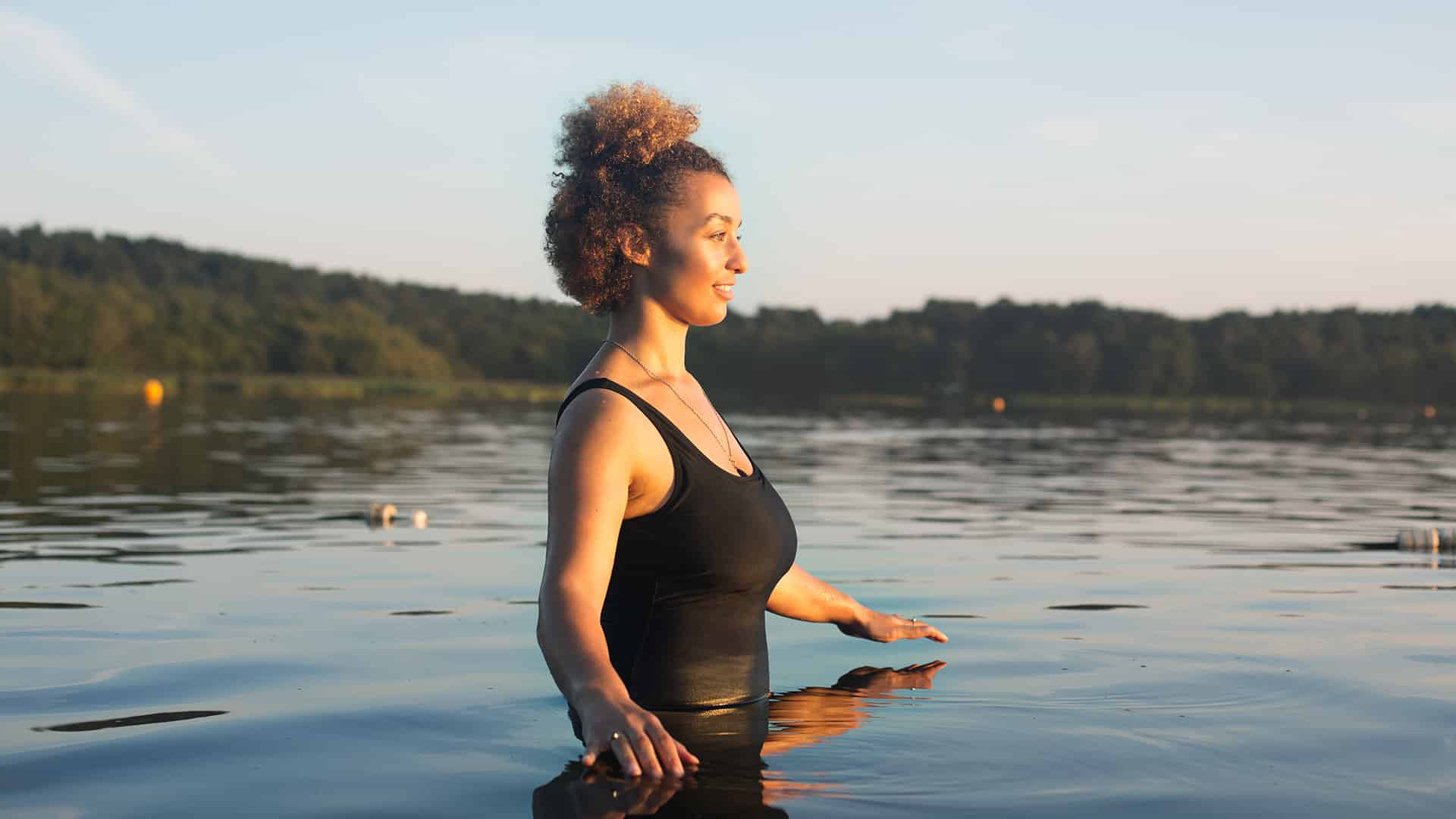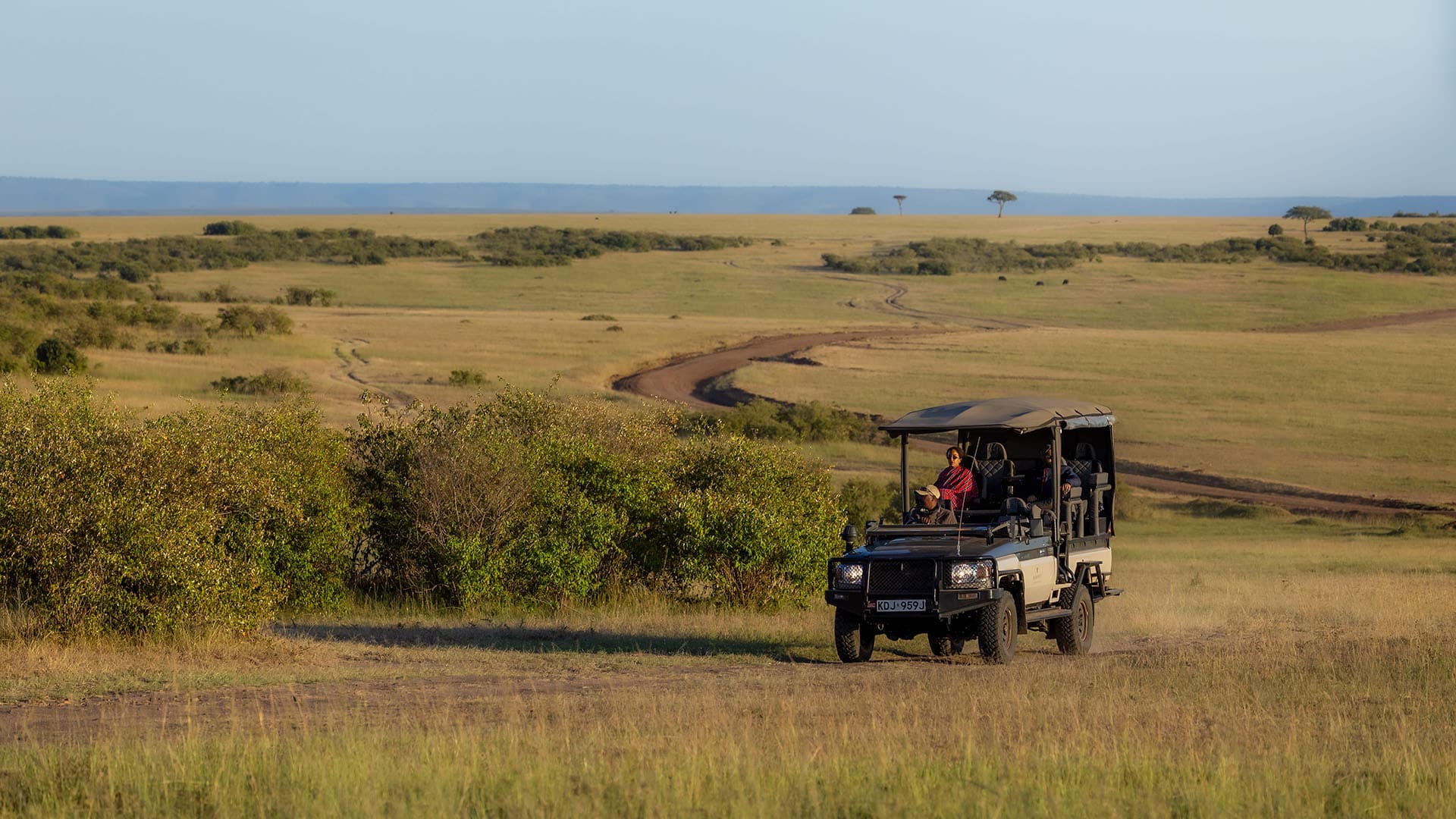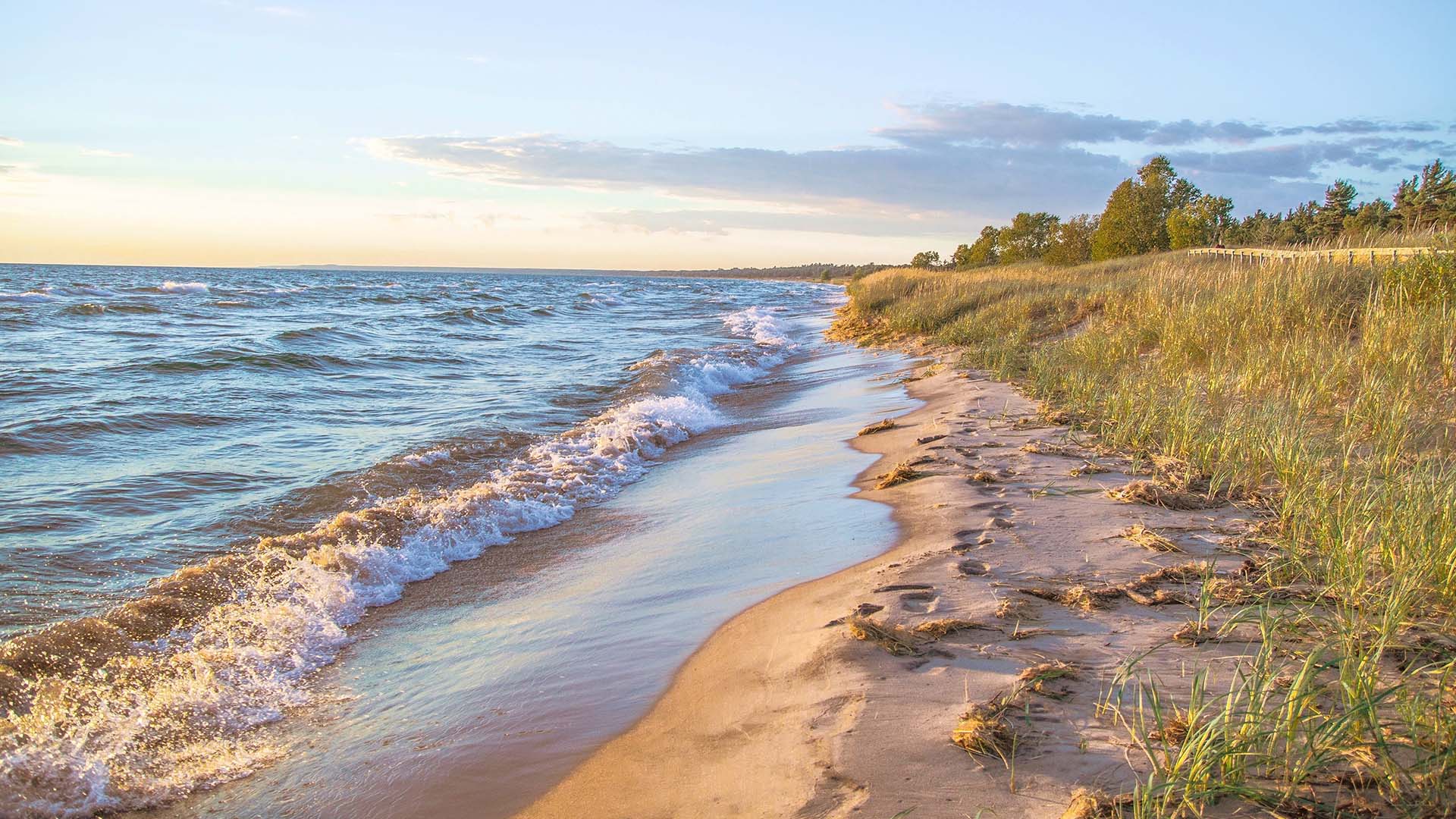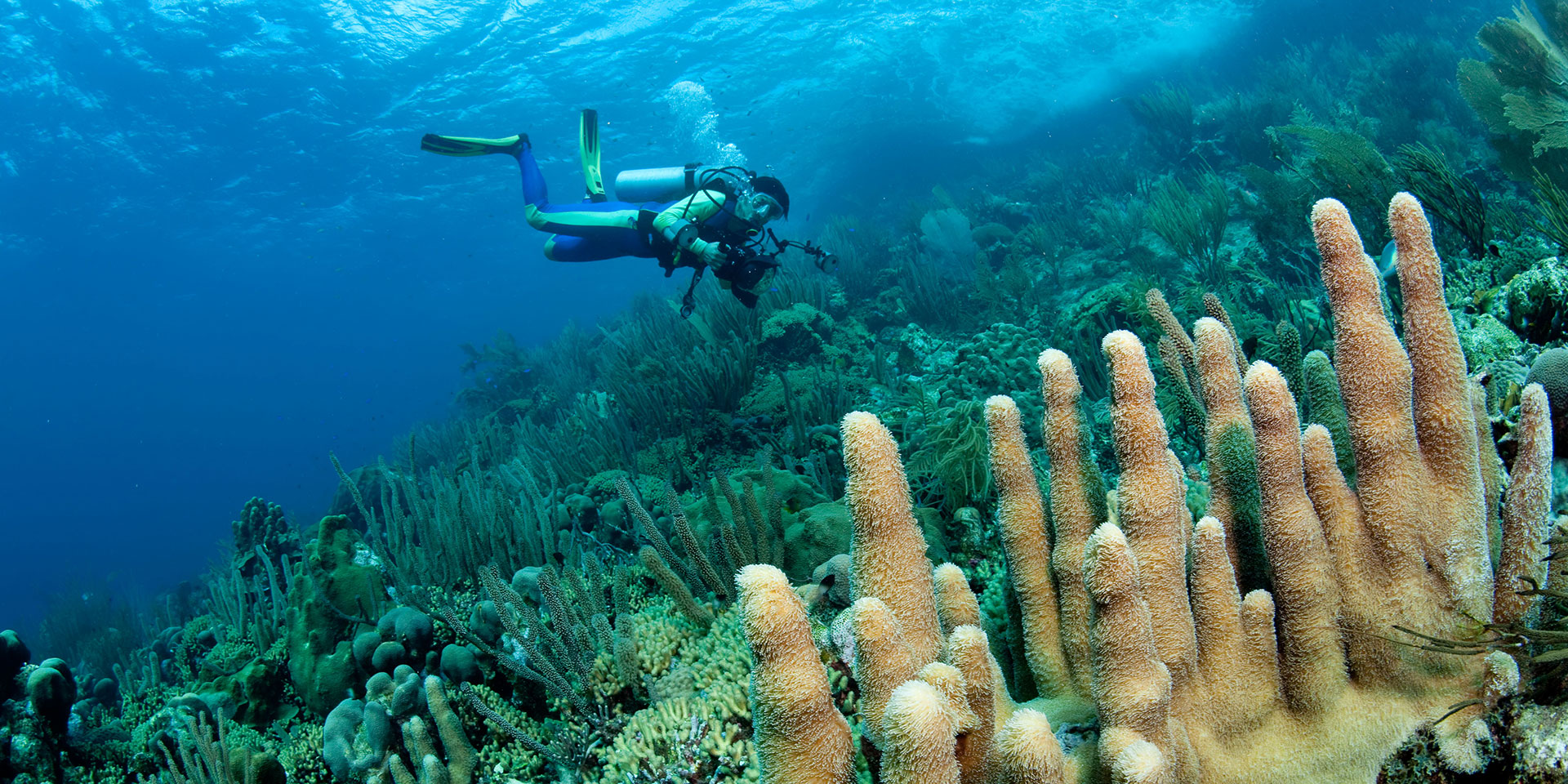
Bonaire’s moniker as the “Shore Diving Capital of the World” is well earned. (Photo: Alamy)
OutdoorsToss Tanks in the Car for a Bonaire Scuba Diving Road Trip
By Terry WardMany tropical islands beckon certified scuba divers to explore offshore coral reefs—and entice newbies to get their dive certification over the course of a vacation, too. But loads of Bonaire scuba diving sites make it easy to suit up on the beach and be underwater within minutes—all on your own schedule, with no boat ride required to dive in.
That’s because the tiny island in the Dutch Antilles (Bonaire reps the B in the ABC Islands, which include Aruba and Curaçao) is fringed with coral reefs that come remarkably close to shore, earning Bonaire its moniker as the “Shore Diving Capital of the World.”
All you need to do is rent a car (or, better yet, a pickup truck, so you can toss tanks in the back and go!) and drive to your dive sites du jour. Pull off the road with dive gear in tow, suit up, and stroll out to the water’s edge to fin out to the reef.
Read on for our best tips on how to DIY your own shore diving vacation in Bonaire—and the can’t miss sites to put on your underwater itinerary.
Gearing Up
So engrained is the Bonaire scuba diving culture that the island has facilities offering drive-thru air refills for your scuba tanks as well as dive-and-drive specials that include a pickup truck and unlimited air refills for your tanks from companies like AB-Dive, a PADI-certified shop.
Once you’ve rented your ride, you’ll need to rent your dive gear, too, unless you’ve brought your equipment along (at the very least, you’ll need to rent tanks).
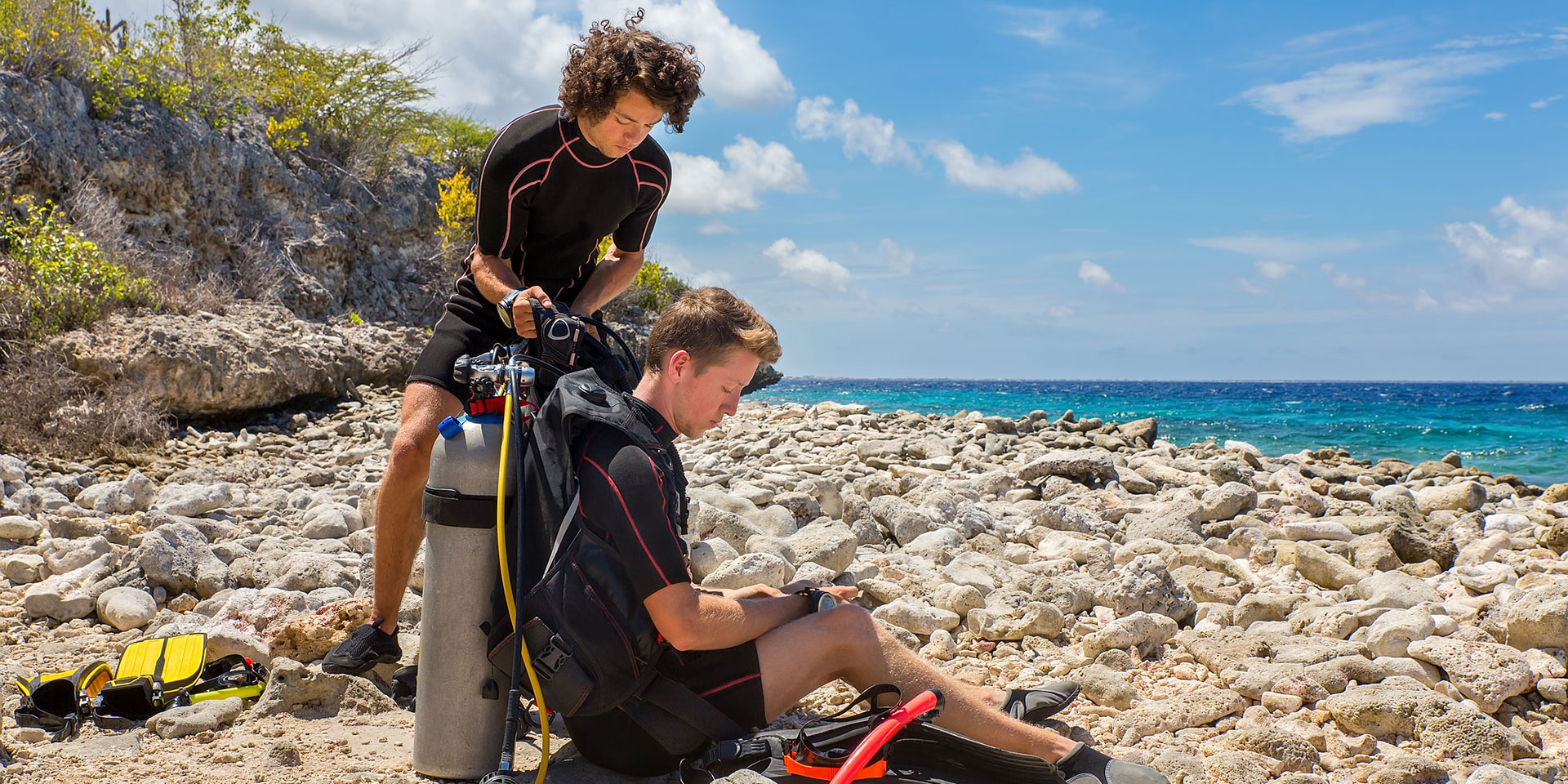
AB-Dive and many other shops have complete dive sets for rent (that include BCD, regulator, wetsuit, fins, booties, mask and snorkel). Or you can just opt to rent the materials you need a la carte. Don’t bypass the booties—they’re essential here for protecting your feet from cuts from rocks and urchins during shore entries.
Other gear you should consider renting—if you haven’t brought it yourself—includes a dive computer for keeping track of your downtime and depth, a dive torch for lighting up underwater nooks and crannies and night dives and a diver’s down flag to alert boaters to your location.
Among several drive-thru air refill stations on the island are Buddy Dive and VIP Diving, both of which can outfit you with tanks and dive gear, too.
Diving In
Once you’re geared up, it’s time to hit to the road and dive in.
Established in 1979, the Bonaire National Marine Park is the oldest marine reserve in the world and protects the waters around Bonaire and Klein Bonaire (translation: little Bonaire)—an island just off Bonaire’s west central coast that you’ll need a boat to reach.
There are over 86 mapped Bonaire dive sites within the protected area and you can drive to 60 of them (look for stone markers painted yellow along the roadside to spot the pullover point)—more than enough to keep you busy during a vacation to the island, in other words, without ever needing to board a dive boat if you don’t want to.
The pristine coral reef fringing Bonaire is full of hard and soft corals such as fans and brain coral and home to some 350 different species of fish, but each dive site has its own particular appeal.
The capital, Kralendijk, lies in the middle of the island on the west coast, and basing here makes it easy to head north or south for a day of diving. Read on for our favorite picks in both directions.
Three Top Shore Dives North of Kralendijk
Karpata: Beautiful clusters of elkhorn coral in near-pristine condition greet you shortly after you enter the water from the beach at this Bonaire scuba diving site known for excellent visibility. If you’re shooting underwater, make sure to bring your wide-angle lens to this site to take in the vast views.
Bari Reef: Minutes outside downtown Kralendijk, this calm Bonaire dive site known for having little to no current most of the time draws diverse in search of octopus and seahorses. Parrot fish, barracuda and tarpon are often seen at this spot popular with snorkelers, too.
One Thousand Steps: Rest assured it’s only 64 steps down from the roadside to the beach to reach this popular shore dive home to beautiful star coral formations and frequented by sea turtles. The occasional big boy—perhaps a manta ray or whale shark—has also been known to swim by.
Three Top Shore Dives South of Kralendijk
Salt Pier: Giant mountains of salt along the shoreline greet you as you arrive to dive Salt Pier, one of Bonaire’s classic shore dive sites. The depth maxes out at about 55 feet and the waters are usually crystal clear, with huge schools of fish congregating around pillars that are absolutely carpeted with colorful corals and sponges.
Hilma Hooker: Considered of the best wreck dives in all of the Caribbean, this 235-foot-long Dutch freighter lies to starboard between two reef systems. Two large deck houses and empty cargo holds are among the areas to explore, and the wreck has become an artificial reef for thousands of marine animals. Look for garden eels poking from the sand as you fin over the ocean floor.
Alice in Wonderland: There are two coral reefs to enjoy at this site that feels like where Alice would’ve wandered if she had scuba tanks in tow. Sergeant majors, snappers and barracuda patrol the reefs, home to beautiful gorgonian corals with long fingers that sway in the current.





